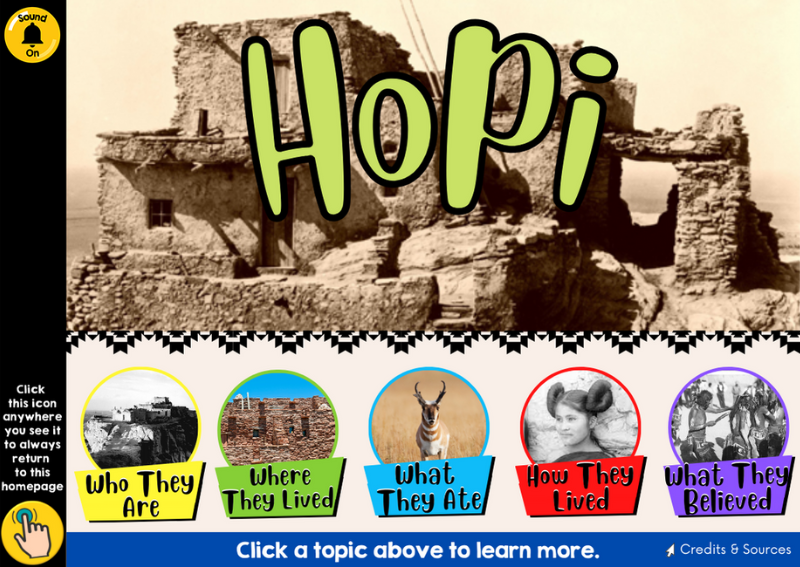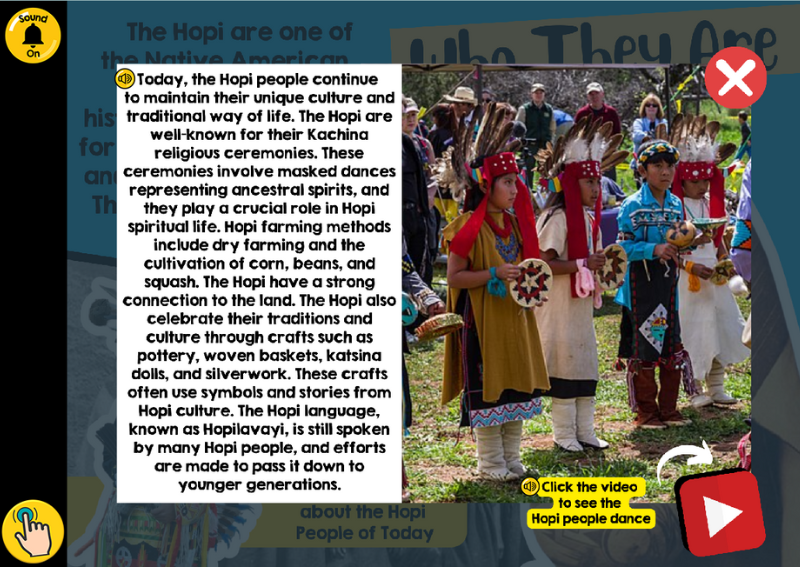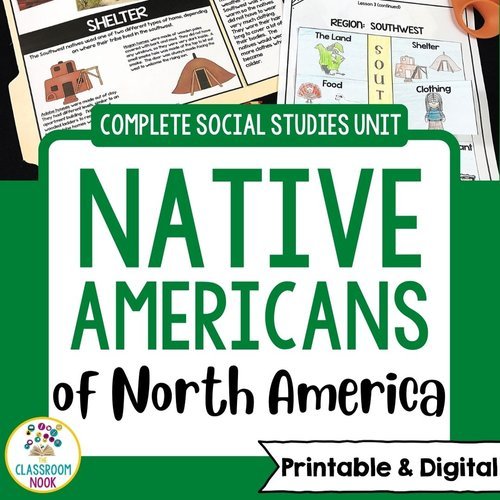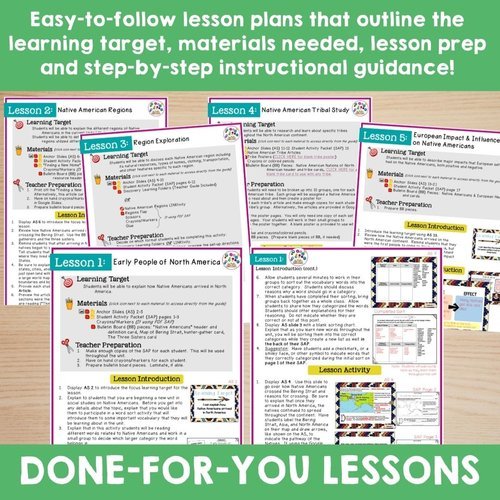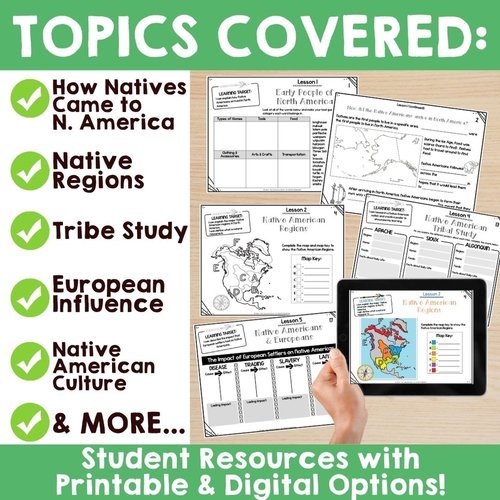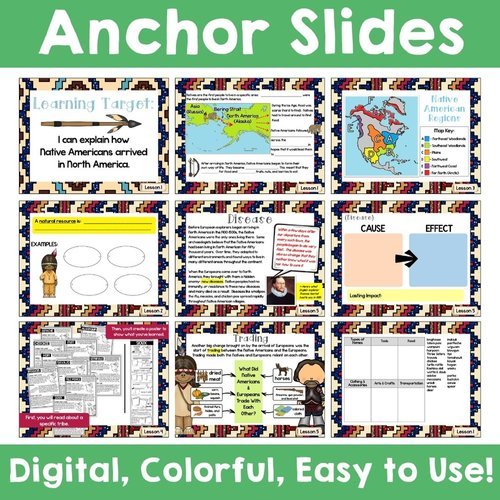Celebrating Native American Heritage Month in the Elementary Classroom
As November arrives, so does the celebration of Native American Heritage Month.
It's a time to honor and acknowledge the rich history, culture, and contributions of Native Americans. In the elementary classroom, this presents a fantastic opportunity for teachers to engage their students in understanding and appreciating this vibrant heritage.
In this post you’ll learn how you can bring literature, music, and interactive research into your classroom to help students dive into Native American culture.
Brief History of Native American Heritage Month
As early as 1915, Seneca Leader Dr. Arthur C. Parker urged the American Indian Association to declare the second Saturday in May as a day to recognize the contributions of the Indigenous people. However, it wasn't until 1990 that President George H.W. Bush declared November as National American Indian Heritage Month. It later became known as Native American Heritage Month. This decision was the culmination of years of advocacy by various Indigenous leaders and organizations. November was chosen to honor the rich and diverse cultures, traditions, and contributions of Native American tribes, fittingly coinciding with traditional harvest celebrations in many tribes. The month serves as an important time for education, reflection, and celebration of Native American history and culture.
Honoring Native American Heritage Month in the Classroom
With several books, videos, and learning resources at our fingertips, it’s easy for upper elementary teacher to incorporate Native American Heritage Month into the classroom!
Books to Read During Native American History Month
Looking to add some new titles to feature in your classroom library during Native American History Month? Here are some great titles to check out from your school or local libraries, or even purchase off of Amazon. Simply click each title to see details (affiliate links)
Island of the Blue Dolphins by Scott O’Dell is a classic children's novel based on a true story. It follows the tale of a young girl named Karana, a member of the Nicoleño tribe, who is left alone on an island off the coast of California after her people depart in the face of Russian hunters. Karana's struggle for survival becomes a solitary adventure as she learns to fend for herself, finds companionship in unlikely creatures, and confronts the challenges of nature and isolation. The story explores themes of resilience, self-sufficiency, and the connection between humans and nature, offering a poignant and inspiring narrative of courage and determination in the face of adversity.
Buffalo Bird Girl: A Hidatsa Story by S.D. Nelson tells the story of a young Hidatsa girl named Buffalo Bird Girl, also known as Waheenee. Set in the 19th century, the book follows Waheenee's life within the Hidatsa tribe along the Missouri River in present-day North Dakota. Through beautiful illustrations and engaging storytelling, the book explores Waheenee's experiences, her connection to her culture, and the traditional ways of her people. It details her daily life, cultural practices, and the changing seasons. Waheenee's story offers insight into the rich heritage and customs of the Hidatsa people, emphasizing their strong connection to the land and their resilience in the face of change.
We Are Water Protectors by Carole Lindstrom and illustrated by Michaela Goade is a powerful and beautifully illustrated children's book that follows a young Indigenous girl who speaks of the importance of protecting the Earth's water. The story is a call to action, emphasizing the vital role of water in the lives of Indigenous communities and all living beings. As she shares a prophecy passed down by her ancestors, the young protagonist conveys a message of environmental stewardship, urging readers to stand up against those who threaten the water and the Earth. The book weaves together themes of environmentalism, Native American spirituality, and the importance of preserving nature for future generations. It serves as both a story and a plea to respect and protect our planet's most vital resource.
Eagle Song by Joseph Bruchac centers around Danny Bigtree, a Mohawk boy living in the present day. Danny struggles with conflicts, both internal and external, as he navigates life, school, and his Native American heritage. He faces bullying and stereotypes at his new school, which affects his self-esteem and perception of his identity. With the support of his family, elders, and traditional teachings, Danny learns to embrace his cultural roots, finding strength and pride in his Native American heritage. The story showcases the importance of understanding, respecting, and preserving one's cultural heritage amidst the challenges of modern life.
First Laugh - Welcome Baby! by Rose Ann Tahe and Nancy Bo Flood, with illustrations by Jonathan Nelson, is a heartwarming picture book that celebrates the Navajo tradition of the First Laugh Ceremony. The story revolves around a Navajo family eagerly awaiting the first laugh of a new baby, which is considered a significant and joyous event in Navajo culture. The family members, along with community members, engage in playful and loving attempts to elicit the baby's first laugh. The book beautifully portrays the cultural significance of this special ceremony and highlights the bonds of love and community that surround the arrival of a new member. The charming illustrations and engaging narrative capture the essence of this cherished Navajo tradition, emphasizing the importance of family, love, and cultural heritage.
At the Mountain’s Base by Traci Sorell and illustrated by Weshoyot Alvitre is a touching picture book that explores themes of love, family, and bravery. Set during World War II, the story follows a Cherokee family awaiting the return of a loved one, a pilot serving in the war. The family, comprised of women, gathers together, drawing strength from their heritage and honoring their Cherokee roots. The narrative beautifully captures the bond between the family members as they look towards the sky, sharing their love and sending prayers for the safe return of their cherished pilot. The book is a poignant and tender portrayal of resilience, love, and the unwavering support found within a close-knit Cherokee family.
The People Shall Continue by Simon J. Ortiz is a powerful and poetic book that narrates the history of Native Americans from ancient times to the present day. Through vivid storytelling and striking illustrations, Ortiz highlights the resilience, struggles, and triumphs of Indigenous peoples. The book focuses on the enduring spirit and perseverance of Native American communities, emphasizing their connections to the land, traditions, and cultural heritage. It weaves together stories of survival, adaptation, and the ongoing presence of Native American people despite historical challenges and injustices. Ultimately, the book is a celebration of the strength and determination of Native American cultures to endure and thrive through the ages.
They Dance in the Sky: Native American Star Myths by Jean Guard Monroe and Ray A. Williamson is a fascinating collection of Native American celestial tales and myths that explain the origins of stars, constellations, and the universe. The book features stories from various Native American tribes, sharing their unique interpretations of the night sky. It weaves together legends and traditions, illustrating how different tribes perceive and explain celestial phenomena.
Fry Bread: A Native American Family Story by Kevin Noble Maillard is a vibrant and heartwarming picture book celebrating the tradition of making fry bread. Through poetic prose and colorful illustrations, the book explores the significance of fry bread in the context of a modern Native American family. It emphasizes how fry bread is more than just a food; it's a symbol of unity, family, and heritage. The story showcases the various ways fry bread is prepared and enjoyed by diverse Native American communities, tying together themes of culture, history, and the importance of shared traditions. The book celebrates the joy, love, and togetherness that arise from the making and sharing of this iconic and cherished food.
Researching Native American Peoples
North America is home to a diverse range of Indigenous or Native American groups, each with its own distinct cultures, traditions, languages, and histories. The exact number of these groups can vary due to factors such as different classifications, subgroups within larger tribes, historical changes, and evolving tribal identities.
There are hundreds of recognized Native American tribes in North America. In the United States alone, there are over 570 federally recognized tribes. In Canada, there are numerous First Nations groups. These include well-known tribes such as the Cherokee, Navajo, Lakota, Cree, Apache, Iroquois, and many others, along with smaller and less widely recognized bands and communities.
It's essential to understand that Indigenous groups in North America are incredibly diverse, each with its own unique customs, languages, and cultural practices that have been passed down through generations. This diversity reflects the richness and complexity of the various Indigenous nations throughout North America.
While it is impossible to gain a complete understanding of all Native American groups, teachers can introduce their students to several of the more well-known groups on the North American continent, or explore groups that are important and known in your specific region.
LINKtivity Learning is a great resource for upper elementary teachers who want to provided a guided research learning experience. LINKtivity Learning is a subscription service that helps teachers get excited to teach by providing low-prep digital activities that make learning fun. And, with their LINKtivity series on Native American Peoples, your students can explore a variety of Native American groups across the North American continent.
Through video, audio, photographs, and more, students can tap into a multimedia learning exploration for Native American groups such as:
The Apache (coming soon!)
The Coast Salish (coming soon!)
Check out the Haudenosaunee LINKtivity below!
Want instant access to our Native American Peoples LINKtivity series? Become a member of LINKtivity Learning today and tap into a huge growing library of LINKtivities in all content areas (including this Native American series!)
LINKtivity Learning’s series on Native American Groups is perfect to use during Native American Heritage Month. The series can be used in a variety of ways:
Morning Meetings: Start your day by discussing a different Native American group each week, promoting cultural awareness and diversity appreciation.
Research Projects: Assign students to dive deeper into one group, enabling them to present their findings and share insights with the class.
Fast-Finishers: Make these Native American LINKtivities available for students who finish classroom tasks early and need an activity to keep them engaged.
Snag our FREE graphic organizer to use with our LINKtivity series, or ANY research exploration on Native American groups!
Grab our FREE Graphic Organizer
As your students research different Native American groups, have them complete this simple graphic organizer that can be used with any Native American group.
Listen to Native AMerican Music
Music is a great way to immerse your students in the Native American culture. The Smithsonian's Native American Music archive website serves as an excellent starting point, offering a collection of videos featuring Indigenous individuals performing a wide array of traditional and modern songs. As you listen to different songs, you can discuss the mood felt in each song and the feelings that may have inspired the music.
And - if learning about Native Americans in North American is part of your social studies curriculum, then be sure to check out our entire unit on Native Americans.






